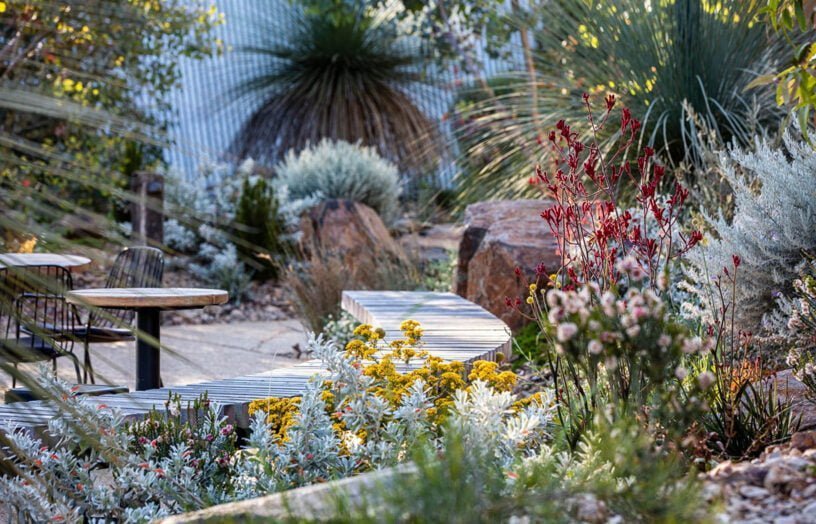Gardening with stormwater
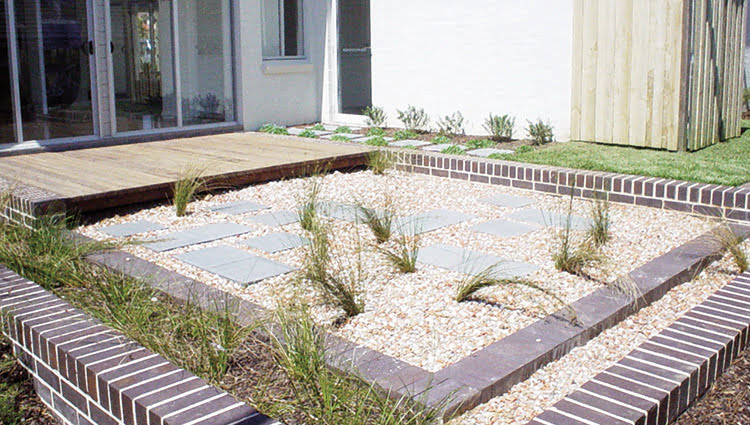
Don’t let all the water go down the drain: use clever landscape design to keep your garden thriving with stormwater.
Stormwater is rain that runs off the ground or paved areas into stormwater drains that then divert it away from your property. It makes sense to slow this flow of stormwater and direct it to areas where it can soak into the soil and benefit the garden. Slowing the flow reduces stormwater pollution and keeps waterways healthier, while delivering more water to your plants to create a beautiful garden.
The first step is to watch your garden while it’s raining to get an idea of where puddles are forming and where water is flowing across the surface. Are there garden or lawn areas where water is simply running downhill? Are paved surfaces collecting water that could be directed to the garden rather than down the drain? Are there downpipes from the house or garage, or overflow pipes from rainwater tanks that could be redirected to the garden? Be careful not to direct water close to building footings or into your neighbour’s property.
Landscaping can direct water to areas where it can seep into the soil to avoid run off. Plants can be used to help slow the flow of water. Areas called raingardens can be created to take rainwater from roofs or pavements. Or think of your whole garden as a raingarden, and start to make changes that take advantage of stormwater.
You can design overflow points that divert water to drains during intense storms, or use porous surfaces for paving instead of impermeable surfaces so that water can seep through the paving into the soil. With a bigger budget you might even look at installing underground tanks to catch stormwater for later use. You might even be able to store water under permeable pavers.
Many of these ideas come from water sensitive design around new housing developments or in urban landscaping projects, so let’s take a look at how these principles and techniques can be implemented at home.
Swales
Swales can be designed to catch as much rain as possible. Swales are hollows or ridges constructed along the contour of a slope to stall water flow. The water then seeps into the ground for the benefit of the plants.

In the home garden swales can be subtle variations in the slope that are part of the landscaping without their function being obvious. Hollows can be narrow or several metres wide and can be lined with mulch. Wider swales can even be lawn areas. Similarly, if ridges form the swales they can be grassed or covered with mulch. Plants or landscape features can also help retain and infiltrate the water, or they can be used to extend and enhance your swales. Swales are particularly good for retaining water around trees or deep-rooted shrubs.
Raingardens
Raingardens are attractive landscape features, and serve the function of capturing stormwater so that it seeps slowly into the soil. Common rain gardens are ponds or water features designed to take stormwater from overflow pipes from rainwater tanks or direct from downpipes from the roof of the house. A habitat for frogs can even be a rain garden.
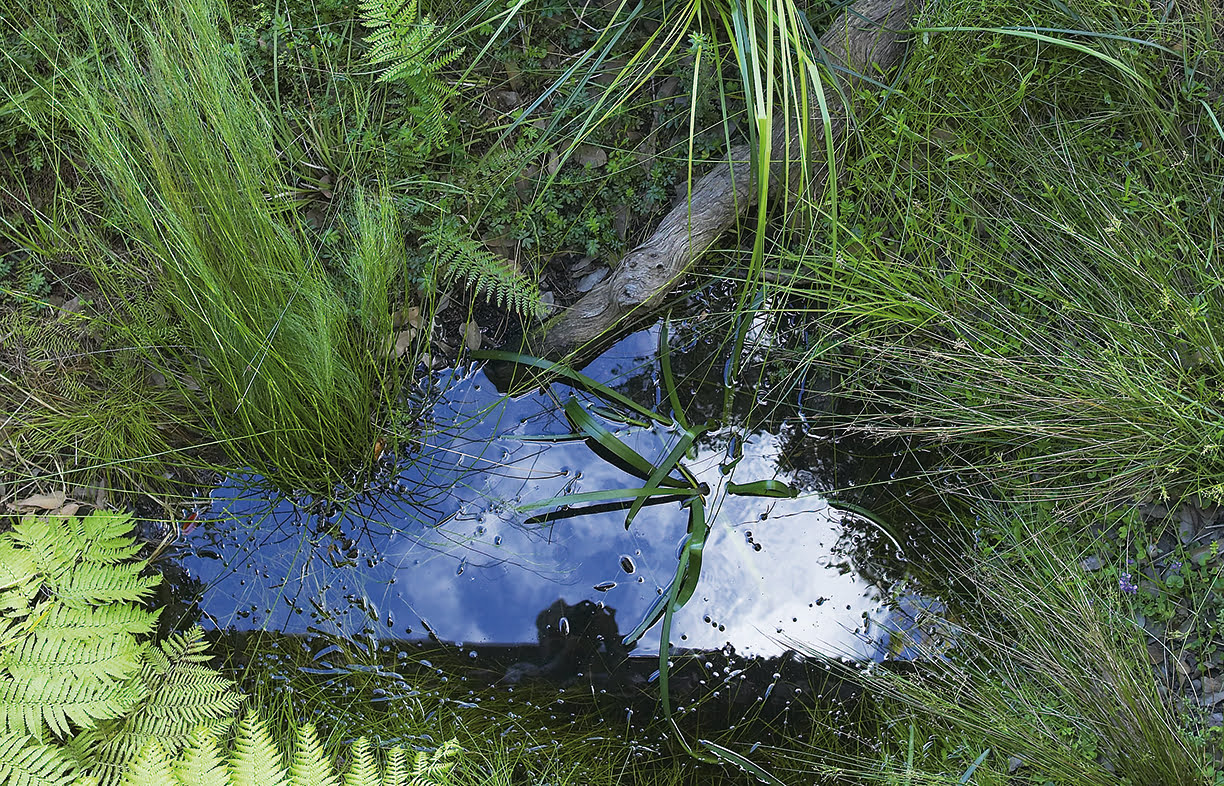
A raingarden typically has an overflow point to a stormwater drain for when there is really heavy rain for extended periods. The soil in the raingarden can be protected with mulch or pebbles and the garden should feature plants that can tolerate the soil going from very wet to periodically dry. Parts of the raingarden can be covered with porous paving to allow easy access. When raingardens are next to buildings, waterproof barriers can be used to prevent waterlogging of soil under the building.
The preference is to use rocks or pebbles as mulch in raingarden design, as these don’t float with water flow and clog drains, but like organic mulch, they protect the soil from evaporation and suppress weeds.
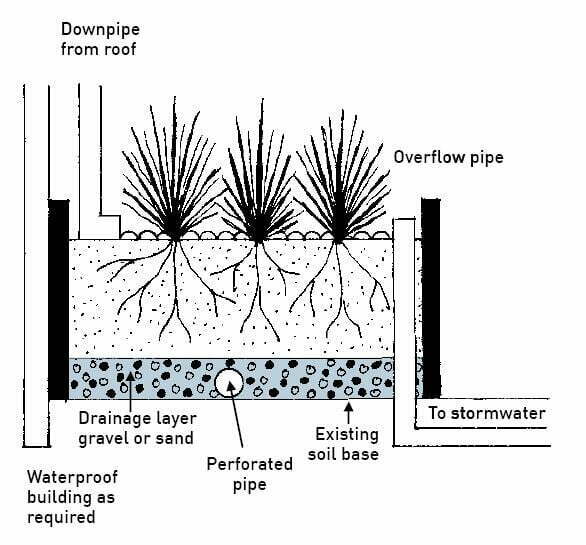
Infiltration tanks
With a bigger budget you could even install underground tanks to harvest stormwater. Tanks can be constructed onsite that allow infiltration of water from the ground above, or surface drains or stormwater pipes can direct stormwater into the tank. This water can then be used to irrigate the garden, or to flush the toilet if it is clean enough.
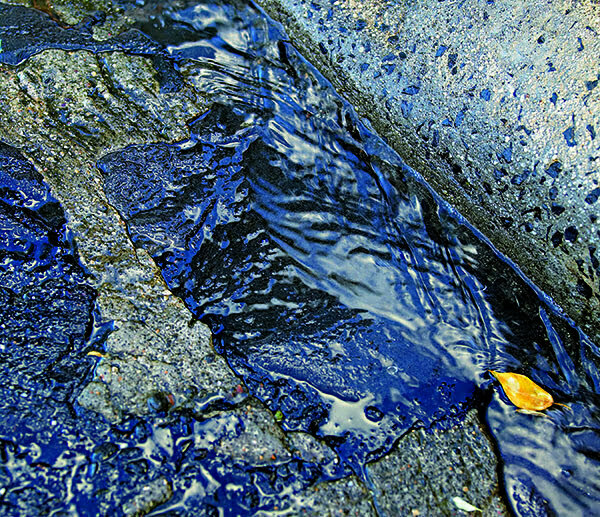
The tanks typically include a filter to screen out sediment, leaves and other debris from entering the tank. Initial filtration can happen via swales, raingardens or reed bed filters. When working out whether to install a storage tank for stormwater, consider how much you can exclude contaminants like motor oil from driveways, dog poo, fertilisers and sediment. Prevention is a key to ensuring water quality.
The tank systems best suited to infiltration are modular and consist of a polypropylene liner, geotextile fabric and high density polyethylene assembled to the size of the available space. The polypropylene liner is left off the top of the tank to allow infiltration from above. Soil is then placed over the assembled tank allowing the area to still be used as garden or landscaped; these systems also have enough load-bearing strength to support heavy vehicles. Root guards are needed if large trees are adjacent, and a pump as well so you can use the water.
The tank can be positioned below a raingarden or porous paving to capture water from above. You could use the same tank to take rainwater from the roof and stormwater from the ground, but this will downgrade your rainwater to stormwater quality.
Porous or permeable paving
While you’re probably not going to rip up your concrete driveway to do this, porous paving is something to consider when you’re putting new paving in. Porous paving allows water to seep through into the ground while offering the same stability and function as non-porous paving. Trees or other plants near the paving will benefit from the water.

Porous paving can be permeable concrete pavers or pebble pavers that look similar to conventional pavers. Or it can be concrete grid paving or modular plastic pavers that form a matrix. Each of these allows water to filter through voids filled with sand, gravel or grass.
Sand or gravel is typically used below the paving to increase the infiltration rate of the water. A gravel layer below porous or permeable pavers can function as a storage tank or it can drain to a separate tank. Stormwater drains can sit below the paving to remove excess water when infiltration areas are full.
Other paving materials include gravel for paths or driveways, as well as some forms of asphalt that allow water to seep through to the ground. Sections of porous paving can be used in conjunction with non-porous paving to allow infiltration in particular areas.
Tips for capturing stormwater in your garden:
- Look at your garden when it rains to see where surface water is forming puddles or flowing along the ground
- Landscape your garden to divert run-off to garden beds and areas that can cope with extra water
- Use swales across slopes to slow and catch water
- Create a raingarden to capture water
- Use porous paving in sections of hard pavement to allow infiltration of water.
This is an edited version of the Stormwater chapter from Stuart McQuire’s book Water Not Down the Drain. Visit our online store to buy your copy
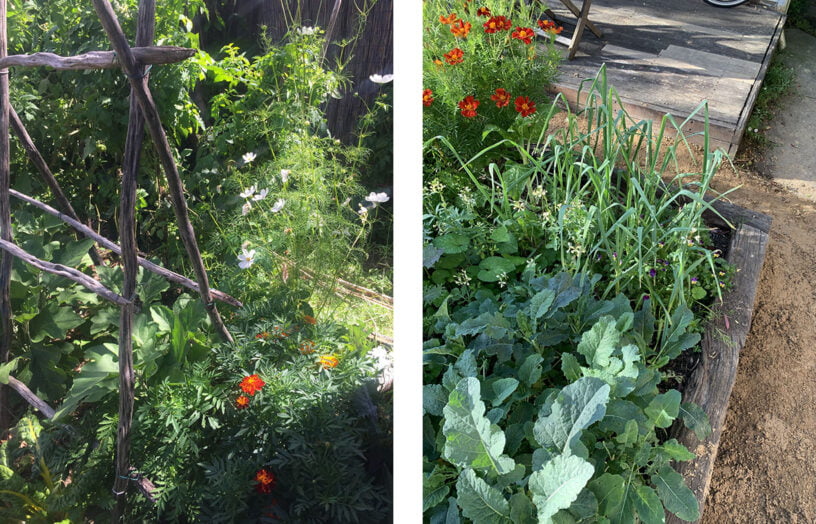 Outdoors
Outdoors
Gardens to go
Jacqui Hagen is a keen gardener who has transformed the gardens of numerous rental properties across Melbourne. She shares some tips and tricks for bringing your garden with you when it’s time to move.
Read more Outdoors
Outdoors
Pocket forests: Urban microforests gaining ground
Often no bigger than a tennis court, microforests punch above their weight for establishing cool urban microclimates, providing wildlife habitat and focusing community connection. Mara Ripani goes exploring.
Read more

